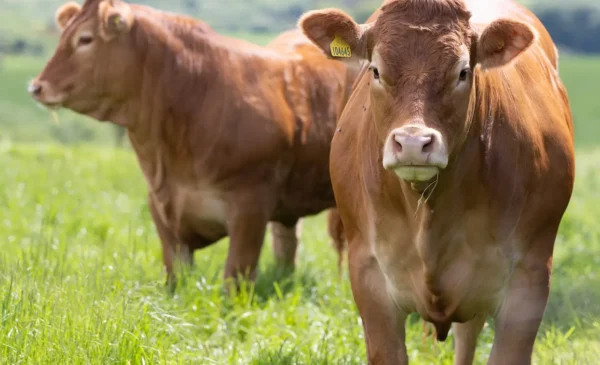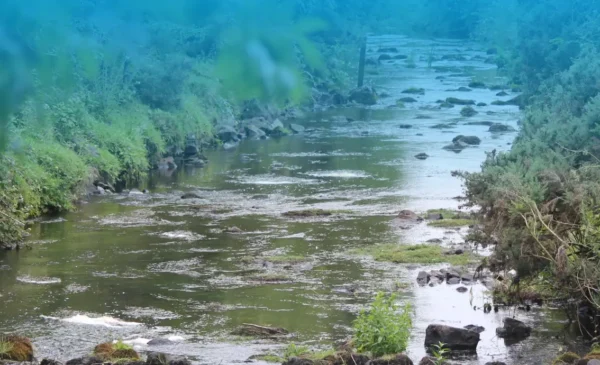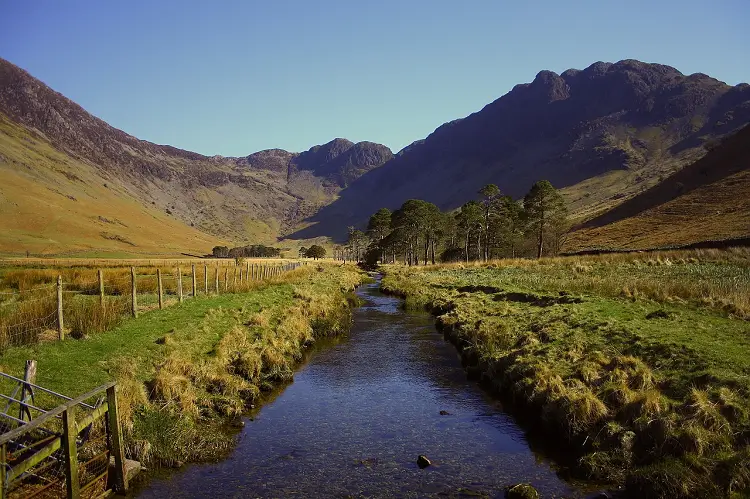Dirty water around farm buildings may seem insignificant, but it can contain valuable nutrients and harmful bacteria from livestock manure and slurry, giving it a high polluting potential.
What are the benefits to you and your business?
Reducing dirty water around the steading can:
- Leave more space for slurry or silage effluent storage, making better use of the storage you have. Cutting down dirty and contaminated areas around the steading will reduce the amount of water you have to collect and handle, saving time and costs on pumping, storage and spreading.
- Reduce your contractor bill and/or the time you spend spreading slurry. Smaller amounts of slurry and dirty water require less pumping and handling.
- Reduce the risk of causing pollution from nutrients and bacteria washed down your farm drains and into local ditches, burns and rivers or into groundwater.
Taking a closer look
There are many sources of dirty water around yards and steadings that could reach surface water drains, ditches and burns around the farm. Livestock gathered in yards can deposit a significant amount of manure and slurry on yard surfaces. Rainfall running through middens, silage clamps, feeding areas and dirty yards will collect nutrients and bacteria, all adding to the problem of slurry and dirty water collection and storage and posing a potential pollution risk from your farm if not dealt with.
To minimise pollution risks from steadings with livestock, any slurry that is produced must be collected and contained. An amendment to legislation now allows “lightly contaminated” water from some areas of the farm steading, to be treated through a Constructed Farm Wetland.
What is ‘lightly contaminated’ water?
Previously, runoff containing livestock excreta was classed as slurry meaning it had to be collected and spread to land. Rules were reviewed to allow run-off from specific operations to be classed as lightly contaminated water and be treated via a Constructed Farm Wetland, designed specifically for that purpose. Runoff from the following areas can be classed as lightly contaminated water:
- Areas used by livestock occasionally, but excluding areas where livestock regularly move on and off to be milked, housed, fed or gathered.
- Silos during 1 November to 30 April, unless a crop has been added to the silo within this period (excluding run-off from silos where livestock have access, such as self-feed silos).
- An outdoor midden containing farmyard manure.
Silage effluent may not necessarily contain any faecal bacteria, but it is very acidic and highly polluting, therefore must be collected and contained. Applications of silage effluent to land should not exceed 25m3/ha (2,225 gallons/acre) at a dilution rate of 1:1 with water.
Steadings with livestock – dirty water audit
Consider your farm and the potential for pollution using the steading dirty water audit (Table 1). It could help you to improve current good practices and give you ideas for minimising dirty water around the steading.
Table 1 – Steading dirty water audit
This information is updated and abridged from The 4 Point Plan (2003).
| Question | Tick box | Action | |
| Is contaminated run-off from yards, hard standings, livestock collection areas and tracks collected and applied to land in accordance with the regulations and good practice? | Yes | Good; see recommended measures for other ideas. | |
| No | Systems should be put in place to either prevent or collect contaminated runoff. Consider:
• Roofing dirty areas to reduce contaminated rainwater on yards • Minimising yard areas accessed by livestock. |
||
| Do all buildings have serviceable guttering and down pipes? | Yes |
Check serviceability of guttering and down pipes at regular intervals.
|
|
| No | Repair or replace broken guttering and down pipes. Make sure clean rainwater is either collected or routed to a clean drainage system. | ||
| Are existing drainage and collection systems checked for serviceability, blockages or leaks? | Yes | This will increase the change that any breaks or blockages are quickly detected, reducing further problems. | |
| No | Check your drainage systems are in good working order. Drainage failure could lead to a pollution incident which may undetected for some time. | ||
| Hosing down processes around the steading can generate large volumes of dirty water. Do you try to minimise water use? | Yes | Less dirty water produced means you could have less slurry to collect, store, handle and spread. | |
| No | Reducing water use means less to collect and handle, along with any financial savings on mains water. Consider:
• Scraping first • Changing hosing practices; a high pressure hose will use less water than a standard hose or volume washer • Fitting a trigger mechanism to all hoses to stop flow when not in use • Using recycled water; installation of a simple tank can utilise rainwater collected from building roofs, reducing mains water use. |
||
| Is your water from the mains supply metered? | Yes | This shows how much water you use on a daily basis. It helps you monitor water use; small daily changes can add up over time. | |
| No | Consider fitting a water meter. You will be able to assess measures taken to improve water use on the farm and work out possible savings. | ||
| Are levels in both above and below ground storage tanks monitored and freeboards maintained? | Yes | This will demonstrate how vulnerable your tanks are to filling up after heavy rainfall and indicate any operational failures. | |
| No | Monitoring tank levels will allow you to reduce the risk of overflow and organise spreading with contractors well in advance. | ||
| Is all run-off from silage clamps collected? | Yes | Roofing silage clamps could further reduce the amount of effluent you are collecting. | |
| No | Collection and proper storage of silage effluent is essential. Winter runoff from the open clamp can be dealt with via a Constructed Farm Wetland. Its worth seeking professional guidance to advise on installation of a suitable collection system. | ||
| Is all run-off from steading middens collected?
|
Yes | Roofing your midden could further reduce the amount of effluent you are collecting. | |
| No | Collection and proper storage of midden run-off is required unless you divert runoff to a Constructed Farm Wetland. Consider clearing out the midden and using a well sited temporary field heap instead. Temporary field heaps must be sited at least 10m away from a field drain or watercourse and 50m from a spring, well or borehole. | ||
This information is updated and abridged from The 4 Point Plan (2003).
Recommended Measures
- Know where your farm drains are and where they lead to. Drains on your farm can provide a direct connection to a nearby watercourse. Take steps to prevent contaminated water around the steading getting into farm drains.
- Keep clean and dirty water separate. Work out how much contaminated yard water goes into your slurry or dirty water collection systems; it may be more than you think. Cutting down on this clean water entering your store and minimising the production of dirty water leaves more space for slurry storage.
- The use of kerbs, channels, cross drains, sleeping policemen or ramps could redirect or separate clean and dirty water around the steading.
- Consider current hosing practices. Water used in hosing practices produces more dirty water to deal with. Where practical, scraping down surfaces to remove solid material before hosing makes it easier and reduces the amount of dirty water to collect and store. Using less water and consequently less energy to deal with dirty water could increase financial savings (especially if using water from a mains supply).
- Look at stock routes around the steading. Could these be shorter or part-roofed to minimise the production of dirty water, thereby reducing the quantity you have to collect, handle, store and spread?
- Consider roofing the midden. This could reduce the amount of water running through the midden, preserve nutrients within the heap and cut the amount of effluent you have to collect, handle, store and spread.
- Consider an alternative to the midden. Using a few well-sited temporary field heaps and leaving your midden clean and empty reduces the amount of effluent you have to collect. The General Binding Rules state that temporary field heaps should not be sited within 10m of a field drain or watercourse or within 50m of a well, spring or borehole, or be sited on shallow soils, gravel or fissured rock. Note that in an NVZ (Nitrate Vulnerable Zone), field middens are also restricted to 12 months duration, with a subsequent period of at least 24 months before creating a new midden on the same site.
- Check the serviceability of slurry storage facilities. Regular inspection and maintenance of slurry stores can reduce their risk of a structural failure and extend their working life.
- Consider fitting a cover to the slurry store or lagoon. Open stores collect rainwater which you will have to handle and spread. A cover will also reduce the loss of greenhouse gases. If considering a new store, covers will be cheaper if done at time of construction rather than as a retrofit.
- Ensure guttering and down pipes are fitted to buildings and are not blocked with leaves or debris. Down pipes are often broken by stock or machinery, however replacement, repair and if necessary protection of these pipes is a quick and simple job that could save you money in the longer term.
- Collect and use roof rainwater. Installing a collection system and using clean rainwater for hosing down is an excellent additional source of water, especially if you are paying for mains water.
- Maintain drinking troughs in good condition both in livestock housing and around the steading. Leaking troughs cost money, add to yard water and in turn could take up space available for slurry storage.
- Consider using a Rural Sustainable Drainage System (Rural SuDS) for clean water or Constructed Farm Wetland to treat lightly contaminated surface water run-off from around the steading.
Is rainwater costing you money?
There can be a hidden cost to handling excess rainwater in the slurry store when you consider energy use. A 170 cow dairy herd in South West Scotland could be spending in excess of £650/year just dealing with rainwater alone. Saving a little on a daily task soon mounts up if you are doing the same thing 365 days of the year.
Minimise quantities of water used and keep clean and dirty water separate. Reducing the volume of contaminated water may lead to cost savings and reduce diffuse pollution risk, with less dirty water to collect, store, handle and spread.
This information is updated and abridged from The 4 Point Plan (2003).
Related resources

Better Nutrient use: Working it Out
After completing this section, you will know the amount of slurry and manure1 generated by your…

Managing Water Margins
How we manage land can have a big impact on surrounding water quality. Spreading operations…


